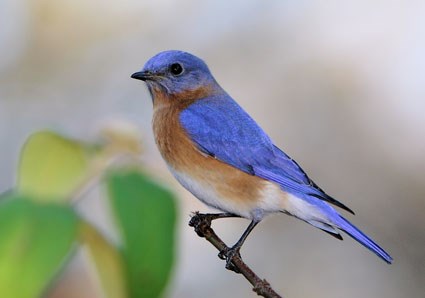At the end of our assignment we were to go around the farm which was are section and had to open up the bird houses, and if it was not a bluebird that was living in there we were suppose to clean it out so no invasive species lived there.
Category Archives: Eastern Bluebirds
Prey and Predators of the Eastern Bluebirds
Eastern Bluebirds eat mostly insects, wild fruit and berries. They also capture and eat larger prey such as shrews, salamanders, snakes, lizards and tree frogs. Predators of the Eastern Bluebirds are chipmunks, flying squirrels, house sparrows, European starlings, American kestrels black rat snakes, black racers, fire ants, domestic cats, black bears, and raccoons.
Eastern Bluebird Houses
Bluebirds have to be safe, and having birdhouses that are safe and easily manageable is very simple. A good bluebird box should be well ventilated, watertight, and have drainage holes. It should be easy to open, monitor, and easy to clean, according to the North American Bluebird Society. Solid and untreated wood is an ideal material, and a bluebird box should not have a perch. Use Guards to protect the nest from climbing predators, such as PVC pipe, sheet metal and Stove pipe guards.
Things that you should avoid doing with Bluebird nests are, keeping the nest in heavy pesticide use areas, keep away from the brush and wooded areas. Most importantly avoid areas where there are a lot of predators present such as the House Sparrow, Chipmunks and Flying squirrels.
Habitat of the Eastern Bluebird

Original habitats include open, generally burned pine savannas, beaver ponds, mature open woods, and forest openings. Today, they are most common along pastures, agricultural fields, suburban parks, backyards, and golf courses. The male Eastern Bluebird displays at his nest cavity to attract a female. He brings nest material to the hole, goes in and out, and waves his wings while perched above it. The female Eastern Bluebird is the only one that builds the nest and incubates the eggs.
Eastern Bluebird Lifestyle
The conversion of forest into pastures and orchards creates the environment that the ideal bluebird habitat would consist of. Open areas create a supported area for nesting and foraging so the bluebirds can feel comfortable in their environment. An adult bluebird diet consist of insects, crickets, beetles and hopers. The bluebird environment consists of a basic living condition which are scattered hard-woods and lots of grasslands. Also power lines, backyards, and meadows are homes for the bluebird generation.
A Typical Eastern Bluebird Home
PSU Berks March 8,2015
Our groups name is the Eastern Blue Bird Society. Our group members are Greg Leto, Amyronn Desvignes, Micheal Human, and Marcos Tena. Greg is from Sinking Spring Pa, and is majoring in I.T and a sophomore, Amyronn and Michael are both from Philadelphia. Amyronn is a freshman and is majoring in business. Micheal is a sophomore and is majoring in communication. Marcos is a Sophomore and is from Palmyra Pa, His major is Latin American Studies and plans to transfer up to University Park next fall. We are working with Penn State Berks to find out where a good place is so we can add more bird houses and to watch and see how many birds come to our location.


